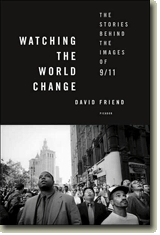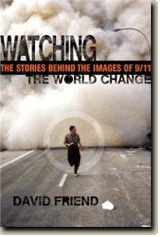« Previous · Home · Next »
June 27, 2008
EYES ON THE ($30,000) PRIZE
Today I posted this piece on the Getty Images News Blog, having been kindly invited to offer a short essay about the W. Eugene Smith Memorial Fund (deadline July 15!) by Getty's Peggy Willett...

(From the Getty News Blog):
In 2008, as they have every summer for 28 years, a committee of three judges will convene in a stifling conference room in Manhattan to plow through piles of photographs and proposals. When they emerge from behind closed doors, after four days of deliberation and two separate rounds of judging, the jury will have chosen the recipient of the W. Eugene Smith Memorial Fund’s annual grant.
At $30,000, the Smith Grant, about to enter its third decade, is arguably photojournalism’s most consistenly prestigious, generous and longest-running award. It is dispensed to a single photographer attempting to complete a significant project conceived in the humanist tradition of renowned photo essayist W. Eugene Smith, who died in 1978. Among the grant’s first 15 recipients, recognized at pivotal, early stages of their careers: Jane Evelyn Atwood, Eugene Richards, Sebastiao Salgado, Gilles Peress, Donna Ferrato, Cristina Garcia Rodero and James Nachtwey.
This year’s deadline is only days away - July 15, 2008.
As you consider applying, please consider this series of questions: Why does W. Eugene Smith matter in this digital age? What is the relevance of his essay “Spanish Village” in the era of the video village? What is the relevance of Nurse Midwife in the age of WebMD?
I would argue that Smith’s commitment to documentary, humanistic photography speaks volumes to today’s young, brash, visually sophisticated (and over-stimulated) generation. Here was a man with a gargantuan appetitie for life and for new experiences. He had a compulsion for clutter and disarray and, at times, a tendency to let his finances slide. He was forever getting in fights with his editors, insisting that they were undermining his pure, single-minded vision. Indeed, Smith’s disdain for authority and outright contempt for authority figures, his unbending adhesion to principle, his commitment to righteous causes, and his explorations in myriad realms of modern culture (especially his passion for jazz) suggest that Smith, the journalist, the artist and the man, might as well have been a paradigm for the 21st century twenty or thirty something photographer.
Smith’s seminal 1972 study of a blighted Japanese village, “Minimata” documented how industry’s wastes had ravaged the land and the local population, killing hundreds and maiming many more. Like Rachel Carson’s Silent Spring before it “Minimata,” was the photographic medium’s first clarion call for ecological action. Had Smith shot only this one photo-essay, he would be conveying a message that is perhaps even more significant today: industrialization and rapid technological advances continue to manufacture “Minimatas” at an alarming rate, on a global scale. And photography - whether in digital or traditional format - remains an essential tool for stirring the world to witness and respond.
Both Smith, the photographer, and the Smith fund itself, thirty years after his death, remain beacons of compassion and commitment, reaffirming the power of the lone visionary in these turbulent times.
I encourage photographers everywhere to seriously consider applying this year. If you aren’t telling stories and opening eyes and waking people up, why are you in this business anyway?
...And speaking of prizes...
Last night was the opening of the World Press Photo exhibition, in the Visitor's Lobby of the United Nations in Manhattan. The show displays the work of this year's winners, chosen from among 80,000 images submitted by photographers from 125 nations. The single frame selected as World Press Photo of the Year: Tim Hetherington's study of an exhausted American soldier on the front lines in Afghanistan - shot on assignment for Vanity Fair.
A duplicate World Press Photo exhibition, featuring reproductions of the same images, will open next week in both Shanghai and Reykjavik.
...And finally...
My last two posts on VanityFair.com's group blog, were about the unbearable "presidentiality" of John Sidney McCain III and about possible design tweaks for the revamped Wall Street Journal.
To wit, from VanityFair.com's graphics wizards...



